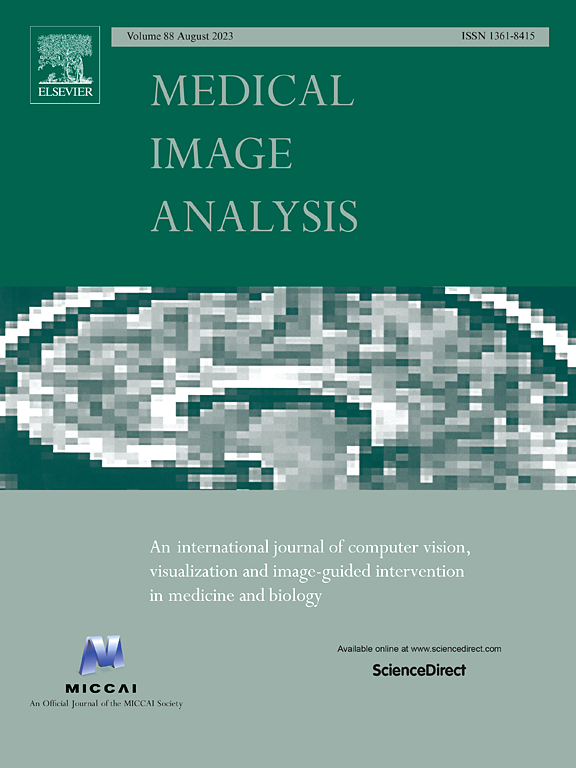The Developing Human Connectome Project: A fast deep learning-based pipeline for neonatal cortical surface reconstruction
IF 10.7
1区 医学
Q1 COMPUTER SCIENCE, ARTIFICIAL INTELLIGENCE
引用次数: 0
Abstract
The Developing Human Connectome Project (dHCP) aims to explore developmental patterns of the human brain during the perinatal period. An automated processing pipeline has been developed to extract high-quality cortical surfaces from structural brain magnetic resonance (MR) images for the dHCP neonatal dataset. However, the current implementation of the pipeline requires more than 6.5 h to process a single MRI scan, making it expensive for large-scale neuroimaging studies. In this paper, we propose a fast deep learning (DL) based pipeline for dHCP neonatal cortical surface reconstruction, incorporating DL-based brain extraction, cortical surface reconstruction and spherical projection, as well as GPU-accelerated cortical surface inflation and cortical feature estimation. We introduce a multiscale deformation network to learn diffeomorphic cortical surface reconstruction end-to-end from T2-weighted brain MRI. A fast unsupervised spherical mapping approach is integrated to minimize metric distortions between cortical surfaces and projected spheres. The entire workflow of our DL-based dHCP pipeline completes within only 24 s on a modern GPU, which is nearly 1000 times faster than the original dHCP pipeline. The qualitative assessment demonstrates that for 82.5% of the test samples, the cortical surfaces reconstructed by our DL-based pipeline achieve superior (54.2%) or equal (28.3%) surface quality compared to the original dHCP pipeline.
发展中的人类连接体项目:一个快速的基于深度学习的新生儿皮层表面重建管道。
发育中的人类连接组计划(dHCP)旨在探索围产期人类大脑的发育模式。已经开发出一种自动化处理管道,用于从dHCP新生儿数据集的结构脑磁共振(MR)图像中提取高质量的皮质表面。然而,目前该管道的实施需要超过6.5小时来处理一次MRI扫描,这使得大规模神经成像研究成本高昂。在本文中,我们提出了一种基于深度学习(DL)的快速管道用于dHCP新生儿皮质表面重建,包括基于DL的脑提取、皮质表面重建和球面投影,以及gpu加速的皮质表面膨胀和皮质特征估计。我们引入了一个多尺度变形网络来学习从t2加权脑MRI端到端的微分形态皮质表面重建。集成了一种快速无监督球面映射方法,以最小化皮质表面和投影球体之间的度量畸变。在现代GPU上,我们基于dl的dHCP管道的整个工作流程仅在24秒内完成,比原始dHCP管道快了近1000倍。定性评价表明,在82.5%的测试样本中,我们基于dl的管道重建的皮质表面质量优于(54.2%)或等于(28.3%)原始dHCP管道。
本文章由计算机程序翻译,如有差异,请以英文原文为准。
求助全文
约1分钟内获得全文
求助全文
来源期刊

Medical image analysis
工程技术-工程:生物医学
CiteScore
22.10
自引率
6.40%
发文量
309
审稿时长
6.6 months
期刊介绍:
Medical Image Analysis serves as a platform for sharing new research findings in the realm of medical and biological image analysis, with a focus on applications of computer vision, virtual reality, and robotics to biomedical imaging challenges. The journal prioritizes the publication of high-quality, original papers contributing to the fundamental science of processing, analyzing, and utilizing medical and biological images. It welcomes approaches utilizing biomedical image datasets across all spatial scales, from molecular/cellular imaging to tissue/organ imaging.
 求助内容:
求助内容: 应助结果提醒方式:
应助结果提醒方式:


